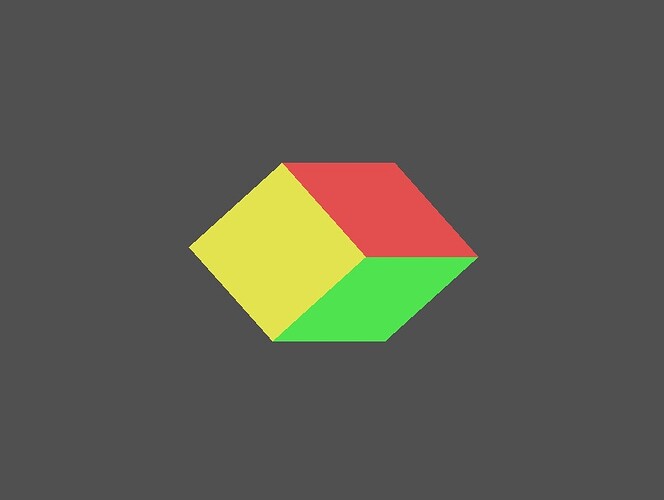Hey all, I’ve been working the past month or two in a game engine ![]() (called
(called Ghengin)
This post is not yet a release – I’m still far enough from a version 0.1.0.
However, I’ve come a long way and I’d like to share a few pictures of my progress. Here’s the latest screenshot:
I hope to, soon enough, write a more substantial explanation of the engine’s technical challenges and overall design decisions so far; and on the game developer’s facing side of the engine.
A few key points regarding the main libraries it currently depends on (besides core ones like vector, containers, time, …):
- The renderer is written using the great bindings to the Vulkan API
- The shaders are crucial in the overall design, and a lot of code depends on their definition (e.g. preparing render pipelines, allocating descriptor sets and textures, everything materials related …). The shaders are written using FIR, an amazing shader language embedded in Haskell!
- The entity management, scene graph and render queue are done/created through the apecs entity component system.
- Vectors and matrices are from geomancy
- GLFW-b for window management and user input (used as the window backend for vulkan)
- The dear-imgui bindings for the GUI
- JuicyPixels for loading textures
A cool note on FIR: the shader’s “interfaces” are defined at the type level, and that type information is used to validate the game-developer-defined-materials, i.e. if you define materials incompatible with your shaders, the program will fail at compile time
The game itself is based on Sebastian Lague’s series Procedural Planets.
The showcase:
The very first achievement was rendering a triangle:
Then I rendered a simple cube and was able to rotate it with a simple model transform matrix:
Later I got a perspective camera which could move around the world. I was generating spheres at this point and the colors show that I was getting closer to generating the normals right too.
I managed to integrate dear-imgui into the renderer at this point, and later on fixed a dreaded off by one error which kept making the GUI behave funny and crash. I was also experimenting with simple diffuse lighting here.
With the GUI in place, I started focusing on developing planets by generating single sphere and modifying the height value of each point on the sphere by noise value: generating terrain and mountains.
After the terrain generation I spent some long weeks on the internals of the renderer before achieving more visual results with the exception of the following color-based-on-height-relative-to-min-and-max-heights planet:
Those weeks were spent in internal technical challenges which I hope to describe on a subsequent post with the resulting design and implementation (and hopefully avoid to some extent the arduous process of understanding and reaching a design and implementation).
This week, with the material system working great for a first iteration, I spent finally some more time on the procedural planets: I added specular highlights to the lighting model (using the blinn-phong model) and added a (gradient based) texture to the planet that is sampled according to the height of each point in the planet. The result is a nicely lit planet with colors depending on the height (lower height = blue for water, middle = green for grass, higher = brown for mountains)
PS: I don’t expect it to be useful without a proper explanation, but the development is going on @ GitHub - alt-romes/ghengin: Ghengin: A vulkan-based, shader-centric, type-heavy, Haskell game engine. The next feature which is almost done is a gradient editor in the GUI.
Here’s a quick look at the Main module of the procedural planets game.
initG :: Ghengin World ()
initG = do
-- Planet settings used to generate the planet and which are edited through the UI
ps <- makeSettings @PlanetSettings
(planetMesh,minmax) <- newPlanet ps
-- Load the planet gradient texture
sampler <- createSampler FILTER_NEAREST SAMPLER_ADDRESS_MODE_CLAMP_TO_EDGE
tex <- texture "assets/planet_gradient.png" sampler
-- Create the render pipeline based on the shader definition
planetPipeline <- makeRenderPipeline Shader.shaderPipeline
-- Create a material which will be validated against the render pipeline at compile time
m1 <- material (Texture2DBinding tex . StaticBinding (vec3 1 0 0) . StaticBinding minmax) planetPipeline
-- Create a render packet with the mesh, material, and pipeline.
-- All entities with a RenderPacket component are rendered according to it.
let p1 = renderPacket planetMesh m1 planetPipeline
-- Define our scene graph
sceneGraph do
-- A planet entity, with the planet render packet and a transform
e1 <- newEntity ( p1, Transform (vec3 0 0 0) (vec3 1 1 1) (vec3 0 (pi/2) 0) )
-- A camera
newEntity ( Camera (Perspective (radians 65) 0.1 100) ViewTransform
, Transform (vec3 0 0 0) (vec3 1 1 1) (vec3 0 0 0))
-- The planet UI component based on the `ps` settings
newEntityUI "Planet" $ makeComponents ps (e1,tex)
pure ()
updateG :: () -> DeltaTime -> Ghengin World Bool
updateG () dt = do
-- Every frame we update the first person camera with the user inputs and the planet's rotation
cmapM $ \(_ :: Camera, tr :: Transform) -> updateFirstPersonCameraTransform dt tr
cmap $ \(_ :: RenderPacket, tr :: Transform) -> (tr{rotation = withVec3 tr.rotation (\x y z -> vec3 x (y+0.5*dt) z) } :: Transform)
pure False
main :: IO ()
main = do
-- Run the game with this init, update and end function
ghengin w initG undefined updateG endG
If you are curious about the full source of the planets game, beware of dragons ![]() . It is not ready as a learning resource whatsoever.
. It is not ready as a learning resource whatsoever.













